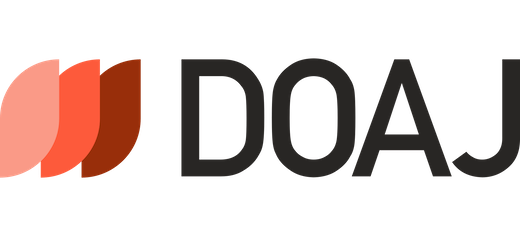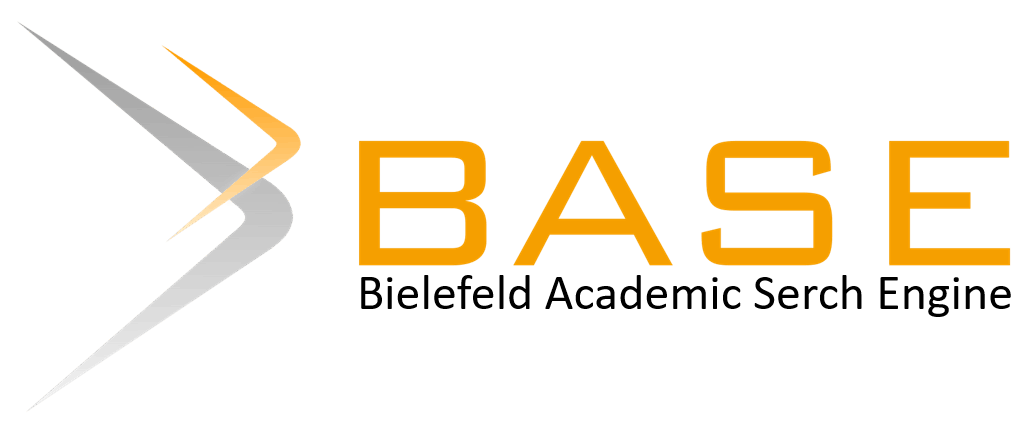Using FatSecret application to foster student’s critical nutrition habits
Abstract
Obesity is a global health problem that requires education-based solutions. This study aims to provide students with critical habits in choosing food through biology learning based on the FatSecret application on digestive system material. The research method used a pre-experimental approach with a one-group pretest-posttest design, involving 29 grade XI students. The research instrument was a questionnaire of students' awareness of healthy eating patterns, which is based on eight points of recommendations from the Ministry of Health, as well as a questionnaire of students' responses to learning. The results showed that the majority of students experienced positive changes in healthy eating habits after learning, with 50.6% of students showing an increase in critical awareness. The FatSecret app proved effective in helping students record and analyze daily food consumption data. A total of 62% of students stated that the learning helped them plan a healthy diet, while 75.9% felt more aware of their food consumption. However, there were challenges such as students' difficulty in developing realistic action steps and limited understanding of nutrition. This activity confirms that technology integration in biology learning can foster students' critical habits in choosing food, with recommendations for improvement in action planning assistance and strengthening understanding of nutrition concepts.
Keywords
Full Text:
PDFReferences
Abraham, S., Noriega, B., & Shin, J. (2018). College students eating habits and knowledge of nutritional requirements. 2(1), 13-17. https://doi.org/10.35841/nutrition-human-health.2.1.13-17
Allirot, X., Maiz, E., & Urdaneta, E. (2018). Shopping for food with children: A strategy for directing their choices toward novel foods containing vegetables. Appetite, 120, 287-296. https://doi.org/10.1016/j.appet.2017.09.008.
Anagnostopoulou, A. (2023). Τhe Burden of Obesity on Adult Survivors of Congenital Heart Disease, Past, and Future Directions. Current Problems in Cardiology, 48(5), 101610. https://doi.org/https://doi.org/10.1016/j.cpcardiol.2023.101610
Andrews, D., Van Lieshout, E., & Kaudal, B. B. (2023). How, Where, And When Do Students Experience Meaningful Learning? International Journal of Innovation in Science and Mathematics Education. https://doi.org/10.30722/ijisme.31.03.003
Arif, A., Syafar, M., Ibrahim, E., Suriah, Mallongi, A., & Alwy, M. (2020). Analysis of Community Empowerment in the Implementation of Healthy Living Movement Programs (GERMAS) in the Regional Post-Disaster Palu City. Medico-Legal Update, 20(4), 604-608. https://doi.org/10.37506/MLU.V20I4.1885
Badan Penelitian dan Pengembangan Kesehatan. (2018). Laporan Nasional Riskesdas 2018. Lembaga Penerbit Badan Penelitian dan Pengembangan Kesehatan Indonesia.
Besekar, S., Jogdand, S., & Naqvi, W. (2024). Exploring Sample Size Determination in Educational Research: A Comprehensive Review. F1000Research, 12, 1291. https://doi.org/10.12688/f1000research.141173.3
BSKAP. (2022). Capaian Pembelajaran Mata Pelajaran Fisika Fase E - Fase F. Kementrian Pendidikan Dan Kebudayaan Riset Dan Teknologi Republik Indonesia, 21.
Dalky, H. F., Al Momani, M. H., Al-Drabaah, T. Kh., & Jarrah, S. (2017). Eating Habits and Associated Factors Among Adolescent Students in Jordan. Clinical Nursing Research, 26(4), 538–552. https://doi.org/10.1177/1054773816646308
Direktorat Jenderal Pencegahan dan Pengendalian Penyakit. (2021). Buku Saku untuk Orang Tua: Kenali, cegah, dan atasi obesitas pada anak usia sekolah. Kementerian Kesehatan.
Doumit, R., Long, J., Kazandjian, C., Gharibeh, N., Karam, L., Song, H., Boswell, C., & Zeeni, N. (2016). Effects of Recording Food Intake Using Cell Phone Camera Pictures on Energy Intake and Food Choice. Worldviews on evidence-based nursing, 13 3, 216-23. https://doi.org/10.1111/wvn.12123.
Gardner, J., & Belland, B. (2017). Problem-Centered Supplemental Instruction in Biology: Influence on Content Recall, Content Understanding, and Problem Solving Ability. Journal of Science Education and Technology, 26, 383–393. https://doi.org/10.1007/S10956-017-9686-0
Gniezdilova, V. (2021). Use of Gadgets in Biology Classes as a Means of Increasing Students’ Motivation. Journal of Vasyl Stefanyk Precarpathian National University, 8(1), 174–181. https://doi.org/10.15330/jpnu.8.1.174-181
Habibie, I. Y., Rafiqa, A., & Maghfiroh, D. (2022). Efektivitas Edukasi Gizi Berbasis Sekolah dalam Manajemen Obesitas Remaja di Indonesia: Literature Review. Journal of Nutrition College, 11(3), 220–227. https://doi.org/10.14710/jnc.v11i3.33128
Harahap, U. K., Selaras, G. H., & Ardi, A. (2023). Meta-Analysis of the Impact of Problem-Based Learning on High School Students’ Critical Thinking Abilities in Biology Education. Journal of Digital Learning and Education, 3(2), 172-184. https://doi.org/10.52562/jdle.v3i2.751
Harsh, J. A., Campillo, M., Murray, C., Myers, C., Nguyen, J., & Maltese, A. V. (2019). “Seeing” Data Like an Expert: An Eye-Tracking Study Using Graphical Data Representations. CBE—Life Sciences Education, 18(3), 1-12. https://doi.org/10.1187/cbe.18-06-0102
Helbach, A., Dumm, M., Moll, K., Böttrich, T., Leineweber, C., Mueller, W., Matthes, J., & Polidori, M. (2023). Improvement of Dietary Habits among German Medical Students by Attending a Nationwide Online Lecture Series on Nutrition and Planetary Health (“Eat This!”). Nutrients, 15(3), 580. https://doi.org/10.3390/nu15030580.
Hsu, J. L., Jones, A., Lin, J., & Chen, Y. (2022). Data visualization in introductory business statistics to strengthen students’ practical skills. Teaching Statistics, 44(1), 21–28. https://doi.org/10.1111/test.12291
Josephine, C. V., Ury, N. R., & Suparto, S. (2023). Perbandingan Penurunan IMT Pasien Obesitas Morbid yang dilakukan Bedah Bariatrik dan Non-Bedah. Jurnal MedScientiae, 2(2), 1-8. https://doi.org/10.36452/JMedScientiae.v2i2.2907
Julita, W., Fitri, R., & Arsih, F. (2022). Meta-Analysis: The Effect of Implementing the STEM (Science, Technology, Engineering, Mathematics) Approach on Biology Learning. Journal of Digital Learning and Education, 2(3), 178-186. https://doi.org/10.52562/jdle.v2i3.442
Lai, I., Chang, L., Lee, C., & Liao, L. (2021). Nutrition Literacy Mediates the Relationships between Multi-Level Factors and College Students’ Healthy Eating Behavior: Evidence from a Cross-Sectional Study. Nutrients, 13(10), 3451. https://doi.org/10.3390/nu13103451.
Hartman, A. M., Brown, C. C., Palmgren, J., Pietinen, P., Verkasalo, M., Myer, D., & Virtamo, J. (1990). Variability in Nutrient and Food Intakes Among Older Middle-Aged Men. American Journal of Epidemiology, 132(5), 999–1012. https://doi.org/10.1093/oxfordjournals.aje.a115743
Liu, K. S. N., Chen, J. Y., Ng, M. Y. C., Yeung, M. H. Y., Bedford, L. E., & Lam, C. L. K. (2021). How Does the Family Influence Adolescent Eating Habits in Terms of Knowledge, Attitudes and Practices? A Global Systematic Review of Qualitative Studies. Nutrients, 13(11), 3717. https://doi.org/10.3390/nu13113717
Manurung, E. I., Sianturi, L. A. P., Purba, L. A. S. P., Agustina, M., & Silitonga, E. (2024). Factors Associated with the Implementation of GERMAS (Healthy Living Community Movement) in the Community of Cengkareng Timur Village. Public Health of Indonesia. 10(1), 98–107. https://doi.org/10.36685/phi.v10i1.779
Medeiros, G. C. B. S. de, Azevedo, K. P. M. de, Garcia, D., Oliveira Segundo, V. H., Mata, Á. N. de S., Fernandes, A. K. P., Santos, R. P. dos, Trindade, D. D. B. de B., Moreno, I. M., Guillén Martínez, D., & Piuvezam, G. (2022). Effect of School-Based Food and Nutrition Education Interventions on the Food Consumption of Adolescents: A Systematic Review and Meta-Analysis. International Journal of Environmental Research and Public Health, 19(17), 10522. https://doi.org/10.3390/ijerph191710522
Nikolić-Vesković, D. (2023). Motivation to learn. Glasnik Antropoloskog Drustva Srbije, 56(1–2), 1–13. https://doi.org/10.5937/gads56-45595
Nurcandrani, P. S., Putra, S. J., & Andhita, P. R. (2024). Health Communication Planning Implementation for the Healthy Living Community Movement Program based on Management by Objectives Theory in Banyumas Regency. Proceedings Of International Conference On Communication Science, 3(1), 7-15. https://doi.org/10.29303/iccsproceeding.v3i1.829
Nury, E., Stadelmaier, J., Morze, J., Nagavci, B., Grummich, K., Schwarzer, G., Hoffmann, G., Angele, C. M., Steinacker, J. M., Wendt, J., Conrad, J., Schmid, D., Meerpohl, J. J., & Schwingshackl, L. (2022). Effects of nutritional intervention strategies in the primary prevention of overweight and obesity in school settings: systematic review and network meta-analysis. BMJ Medicine, 1(1), e000346. https://doi.org/10.1136/bmjmed-2022-000346
Pemerintah Indonesia. (2014). Peraturan Menteri Kesehatan tentang Pedoman Gizi Seimbang, Nomor 41 Tahun 2014. Kementerian Kesehatan.
Pemerintah Indonesia. (2017). Instruksi Presiden tentang Gerakan Masyarakat Hidup Sehat, Nomor 1 Tahun 2017. Kementerian Kesehatan.
Savani, K., Stephens, N. M., & Markus, H. R. (2017). Choice as an engine of analytic thought. Journal of Experimental Psychology: General, 146(9), 1234–1246. https://doi.org/10.1037/xge0000351
Sukma, D. T., Suwono, H., & Fachrunnisa, R. (2021). Student’s rationality in decision making on infusion of analytical thinking skill’s framework in biology learning, AIP Conf. Proc, 2330, 030022 https://doi.org/10.1063/5.0043262
Suwono, H., Pratiwi, H. E., Susanto, H., & Susilo, H. (2017). Enhancement of Students’ Biological Literacy and Critical Thinking of Biology through Socio-Biological Case-Based Learning. Jurnal Pendidikan IPA Indonesia, 6, 213–220. https://doi.org/10.15294/jpii.v6i2.9622
Ulfa, Z. D., & Perdana, J. A. (2022). Program Zitasi Generasi Z Melalui Aplikasi Fatsecret Pada Siswa Smk Negeri 1 Palangka Raya. Jurnal Dharma Pendidikan Dan Keolahragaan, 2(1), 35–43. https://doi.org/10.33369/dharmapendidikan.v2i1.21643
Vitale, M., Bruno, V., D’Abbronzo, G., Rivellese, A., Bozzetto, L., Scidà, G., & Annuzzi, G. (2023). Evaluation of eating habits by 7-day food record: web-PC vs. traditional paper format. International Journal of Food Sciences and Nutrition, 74, 580 - 587. https://doi.org/10.1080/09637486.2023.2236808.
DOI: https://doi.org/10.17509/aijbe.v8i1.80579
Refbacks
- There are currently no refbacks.
 AIJBE is under Creative Commons Attribution-ShareAlike 4.0 International License
AIJBE is under Creative Commons Attribution-ShareAlike 4.0 International License









